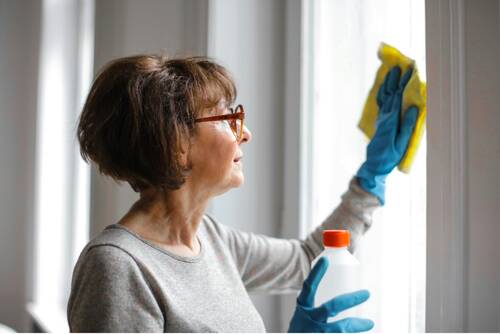
31 Oct Creating a Chemical-Free Environment for Better Health
This growing awareness has encouraged people to seek alternatives that promote wellness. A chemical-free lifestyle doesn’t require drastic changes all at once. Instead, small adjustments—like replacing a few conventional items—can create meaningful improvements. With more consumers focused on healthier choices, the demand for safer products continues to rise.
The Growing Demand for Safer Alternatives
Today, more people are choosing products free from harsh chemicals. This shift is part of a broader movement toward better health and environmental responsibility. Consumers want products that meet their needs without causing harm, and many companies have responded by offering natural, plant-based solutions.
If you are interested in switching to safer alternatives, the Melaleuca products list provides a variety of options for households. It includes everything from laundry detergents and dish soap to supplements and skincare products. Each item is designed to meet everyday needs without exposing families to unnecessary chemicals.
Integrating Safer Choices into Your Daily Routine
Switching to safer products doesn’t have to feel overwhelming. Small changes can gradually reduce exposure to harmful chemicals. Here are a few ways to incorporate better alternatives into daily life:
- Switch to Non-Toxic Cleaning Products
Conventional cleaners often contain ingredients that can irritate the skin or respiratory system. These products may also leave behind residues that build up over time. By replacing them with plant-based cleaners, you can create a safer living space. - Use Natural Personal Care Items
Many personal care products, like shampoos and body washes, contain synthetic fragrances and preservatives. These chemicals can cause reactions, especially for those with sensitive skin. Opting for natural alternatives helps you avoid these irritants while still enjoying high-quality products. - Improve Air Quality with Natural Solutions
Air fresheners and candles are common sources of indoor air pollution. Many release chemicals that degrade air quality over time. Instead of synthetic fragrances, consider using essential oils or air purifiers to freshen up your home.
By gradually introducing these changes, you can build a chemical-free environment that benefits everyone in your household.
How a Chemical-Free Home Benefits Your Well-Being
Creating a chemical-free environment at home goes beyond avoiding unnecessary toxins. It promotes physical and mental well-being. When families reduce their exposure to harsh chemicals, they often experience fewer allergy symptoms, improved breathing, and healthier skin. Many products commonly found in homes, such as cleaners and personal care items, contain ingredients that can cause irritation over time. Switching to safer alternatives lowers the chance of these negative effects.
In addition to physical health, removing harmful chemicals contributes to emotional well-being. Knowing that your household products are safer can bring peace of mind. This is especially helpful for families with young children or pets, who may be more vulnerable to environmental toxins. Simple changes—like switching to non-toxic cleaners and fragrance-free lotions—can help create a healthier home atmosphere.
Common Misconceptions about Going Chemical-Free
Some people hesitate to switch to chemical-free products because of misconceptions. One common belief is that natural alternatives do not perform as well as traditional products. In reality, many companies offer effective solutions that meet or exceed expectations. Their household cleaners, for example, are plant-based but still powerful enough to tackle common messes.
Another misconception is that natural products are too expensive. While some premium brands do come with a higher price tag, there are affordable options available. Many items, such as household cleaners and skincare products, are also designed to be long-lasting, which adds value over time. Starting with a few essential products can also help families make a gradual shift without overspending.
It’s important to remember that going chemical-free doesn’t mean eliminating every product at once. Swapping out a few key items and slowly expanding your collection of safer alternatives makes the process manageable and sustainable.
Taking Practical Steps Toward a Safer Home
Building a chemical-free environment begins with small steps. Replacing conventional chemical cleaners with plant-based versions is one of the easiest ways to start. Focus first on high-traffic areas like the kitchen and bathroom, where chemical use is often highest. Once you’ve replaced these essentials, move on to other products like air fresheners or laundry detergents.
Personal care is another area where change can have a big impact. Switching to natural shampoos, lotions, and deodorants is a good way to reduce exposure to irritating chemicals. It also helps prevent skin-related issues caused by synthetic ingredients.
Finally, improving indoor air quality is an important part of creating a chemical-free space. Instead of relying on synthetic air fresheners, try using essential oils or natural air purifiers. These alternatives keep the air fresh without introducing harmful substances into your home. Products like these can help you maintain a pleasant living environment while staying true to your wellness goals.
Creating a chemical-free environment is a practical way to support your family’s health. Reducing chemical exposure through simple choices—like switching to safer cleaning products, improving indoor air quality, and using natural personal care items—can make a noticeable difference. Building these habits over time benefits physical health and brings peace of mind, knowing that your home is a healthier place for everyone.
——————————–
The information on MedicalResearch.com is provided for educational purposes only, and is in no way intended to diagnose, cure, or treat any medical or other condition.
Some links are sponsored. Products, services and providers are not endorsed.
Always seek the advice of your physician or other qualified health and ask your doctor any questions you may have regarding a medical condition. In addition to all other limitations and disclaimers in this agreement, service provider and its third party providers disclaim any liability or loss in connection with the content provided on this website.
Last Updated on October 31, 2024 by Marie Benz MD FAAD
